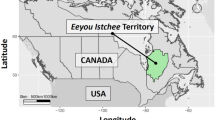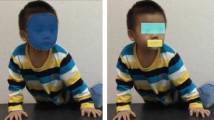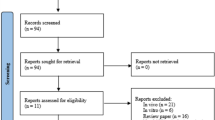Abstract
The Seveso Women’s Health Study (SWHS) is a historical cohort study of the female population residing near Seveso, Italy, on 10 July 1976, when a chemical explosion resulted in the highest known residential exposure to 2,3,7,8-tetrachlorodibenzo-p-dioxin (TCDD). Individual TCDD concentration was measured in serum collected near the time of the explosion, and in 1996, we collected adequate blood for TCDD and total dioxin toxic equivalent (TEQ) measurement. Polychlorinated dibenzo-p-dioxins, dibenzofurans, and biphenyls were measured in 1996 serum for a sample (n=225, 23%) of the SWHS cohort and WHO 2005 TEQs were calculated. We examined characteristics that predict 1996 TCDD concentrations and estimated TCDD elimination half-life over the 20-year period since the explosion. Median lipid-adjusted TCDD and total TEQ concentrations in 1996 serum were 7.3 and 26.2 p.p.t., respectively. Initial 1976 TCDD and age at explosion were the strongest predictors of 1996 TCDD. The TCDD elimination half-life was 7.1 years for women older than 10 years in 1976, but was shorter in those who were younger. Twenty years after the explosion, TCDD concentrations in this SWHS sample, the majority of who were children in 1976, remain elevated relative to background. These data add to the limited data available on TCDD elimination half-life in children.
This is a preview of subscription content, access via your institution
Access options
Subscribe to this journal
Receive 6 print issues and online access
$259.00 per year
only $43.17 per issue
Buy this article
- Purchase on SpringerLink
- Instant access to full article PDF
Prices may be subject to local taxes which are calculated during checkout


Similar content being viewed by others
Abbreviations
- BMI:
-
body mass index
- c-PCB:
-
coplanar PCB
- m-PCB:
-
mono-ortho PCB
- PCDD:
-
polychlorinated dibenzo-p-dioxins
- PCDF:
-
polychlorinated dibenzofuran
- PCB:
-
polychlorinated biphenyl
- SWHS:
-
Seveso Women’s Health Study
- TCDD:
-
2,3,7,8-tetrachlorodibenzo-p-dioxin
- TEF:
-
toxicity equivalency factor
- TEQ:
-
toxic equivalent
References
Zook D, Rappe C . Environmental sources, distribution, and fate. In: Schecter A (ed.). Dioxins and Health. Plenum Press: New York. 1994 pp 79–113.
Wikoff D, Fitzgerald L, Birnbaum L . Persistent organic pollutants: an overview. In: Schecter A (ed). Dioxins and Health 3rd edn. John Wiley & Sons, Inc.: Hoboken, New Jersey). 2012 pp 1–36.
Consonni D, Sindaco R, Bertazzi P . Blood levels of dioxins, furans, dioxin-like PCBs, and TEQs in general populations: a review, 1989-2010. Environ Int 2012; 44: 151–162.
IARC. Polychlorinated dibenzo-para-dioxins and polychlorinated dibenzofurans. IARC Monogr Eval Carcinog Risks Hum 1997; 69: 33–342.
Baan R, Grosse Y, Straif K, Secretan B, El Ghissassi F, Bouvard V et al. A review of human carcinogens-Part F: chemical agents and related occupations. Lancet Oncol 2009; 10: 1143–1144.
Birnbaum L . Developmental effects of dioxins and related endocrine disrupting chemicals. Toxicol Lett 1995; 82-83: 743–750.
Birnbaum LS . The mechanism of dioxin toxicity: relationship to risk assessment. Environ Health Perspect 1994; 102 (Suppl 9): 157–167.
Birnbaum LS, Tuomisto J . Non-carcinogenic effects of TCDD in animals. Food Addit Contam 2000; 17: 275–288.
White SS, Birnbaum LS . An overview of the effects of dioxins and dioxin-like compounds on vertebrates, as documented in human and ecological epidemiology. J Environ Science Health Environ Carcinog Ecotoxicol Rev 2009; 27: 197–211.
King-Heiden TC, Mehta V, Xiong KM, Lanham KA, Antkiewicz DS, Ganser A et al. Reproductive and developmental toxicity of dioxin in fish. Mol Cell Endocrinol 2012; 354: 121–138.
Mocarelli P, Pocchiari F, Nelson N . Preliminary report: 2,3,7,8-tetrachlorodibenzo-p-dioxin exposure to humans—Seveso, Italy. Morb Mortal Wkly Rep 1988; 37: 733–736.
di Domenico A, Silano V, Viviano G, Zapponi G . Accidental release of 2,3,7,8-tetrachlorodibenzo-p-dioxin (TCDD) at Seveso, Italy. II. TCDD distribution in the soil surface layer. Ecotoxicol Environ Saf 1980; 4: 298–320.
Assennato G, Cervino D, Emmett EA, Longo G, Merlo F . Follow-up of subjects who developed chloracne following TCDD exposure at Seveso. Am J Ind Med 1989; 16: 119–125.
Patterson DG, Jr., Hampton L, Lapeza CR, Jr., Belser WT, Green V, Alexander L et al. High-resolution gas chromatographic/high-resolution mass spectrometric analysis of human serum on a whole-weight and lipid basis for 2,3,7,8-tetrachlorodibenzo-p-dioxin. Anal Chem 1987; 59: 2000–2005.
Mocarelli P, Patterson DJ, Marocchi A, Needham L . Pilot study (Phase II) for determining polychlorinated dibenzo-p-dioxin (PCDD) and polychlorinated dibenzofuran (PCDF) levels in serum of Seveso, Italy residents collected at the time of exposure: future plans. Chemosphere 1990; 20: 967–974.
Eskenazi B, Mocarelli P, Warner M, Samuels S, Vercellini P, Olive D et al. Seveso Women’s Health Study: a study of the effects of 2,3,7,8-tetrachlorodibenzo-p-dioxin on reproductive health. Chemosphere 2000; 40: 1247–1253.
Eskenazi B, Mocarelli P, Warner M, Needham L, Patterson DG, Jr, Samuels S et al. Relationship of serum TCDD concentrations and age at exposure of female residents of Seveso, Italy. Environ Health Perspect 2004; 112: 22–27.
Flesch-Janys D, Becher H, Gurn P, Jung D, Konietzko J, Manz A et al. Elimination of polychlorinated dibenzo-p-dioxins and dibenzofurans in occupationally exposed persons. J Toxicol Environ Health 1996; 47: 363–378.
Michalek J, Pirkle JL, Needham L, Patterson D, Caudill SP, Tripathi RC et al. Pharmacokinetics of 2,3,7,8-tetrachlorodibenzo-p-dioxin in Seveso adults and veterans of operation Ranch Hand. J Expo Anal Environ Epidemiol 2002; 12: 44–53.
Warner M, Mocarelli P, Samuels S, Needham L, Brambilla P, Eskenazi B . Dioxin exposure and cancer risk in the Seveso Women’s Health Study. Environ Health Perspect 2011; 119: 1700–1705.
Akins JR, Waldrep K, Bernert JT, Jr . The estimation of total serum lipids by a completely enzymatic ‘summation’ method. Clin Chim Acta 1989; 184: 219–226.
Patterson DG, Turner WE . Method 28: Measurement of PCDDs, PCDFs, and Coplanar PCBs in Serum by HRGC/ID-HRMS. National Center for Enviromental Health, CDC: Atanta, GA. 2005.
Patterson DG, Turner WE . Method 28: Measurement of PCBs and Persistent Pesticides in Serum by HRGC/ID-HRMS. National Center for Enviromental Health, CDC: Atlanta, GA. 2005.
Hornung RW, Reed LD . Estimation of average concentration in the presence of non-detectable values. Appl Occup Environ Hyg 1990; 5: 48–51.
Van den Berg M, Birnbaum LS, Denison M, De Vito M, Farland W, Feeley M et al. The 2005 World Health Organization reevaluation of human and Mammalian toxic equivalency factors for dioxins and dioxin-like compounds. Toxicol Sci 2006; 93: 223–241.
Stata Corp. Stata Statistical Software: Release 11.0. Stata Press: College Station, TX. 2009.
Warner M, Eskenazi B, Patterson DG, Clark G, Turner WE, Bonsignore L et al. Dioxin-Like TEQ of women from the Seveso, Italy area by ID-HRGC/HRMS and CALUX. J Expo Anal Environ Epidemiol 2005; 15: 310–318.
Landi MT, Consonni D, Patterson DG, Jr, Needham LL, Lucier G, Brambilla P et al. 2,3,7,8-Tetrachlorodibenzo-p-dioxin plasma levels in Seveso 20 years after the accident. Environ Health Perspect 1998; 106: 273–277.
Patterson D, Turner W, Caudill SP, Needham L, Total TEQ . reference range (PCDDs, PCDFs, cPCBs, mono-PCBs) for the US population 2001-2002. Chemosphere 2008; 73: S261–S277.
Patterson D, Wong L, Turner W, Caudill SP, DiPietro E, McClure P et al. Levels in the US population of those persistent organic pollutants (2003-2004) included in the Stockholm convention or in other long-range transboundary air pollution agreements. Environ Sci Technol 2009; 43: 1211–1218.
Milbrath M, Wenger Y, Chang C, Emond C, Garabrant D, Gillespie B et al. Apparent half-lives of dioxins, furans, and polychlorinated biphenyls as a function of age, body fat, smoking status, and breast feeding. Environ Health Perspect 2009; 117: 417–425.
Emond C, Michalek JE, Birnbaum LS, DeVito MJ . Comparison of the use of a physiologically based pharmacokinetic model and a classical pharmacokinetic model for dioxin exposure assessments. Environ Health Perspect 2005; 113: 1666–1668.
Kerger BD, Leung HW, Scott P, Paustenbach DJ, Needham LL, Patterson DG, Jr et al. Age- and concentration-dependent elimination half-life of 2,3,7,8-tetrachlorodibenzo-p-dioxin in Seveso children. Environ Health Perspect 2006; 114: 1596–1602.
Aylward LL, Brunet RC, Carrier G, Hays SM, Cushing CA, Needham LL et al. Concentration-dependent TCDD elimination kinetics in humans: toxicokinetic modeling for moderately to highly exposed adults from Seveso, Italy, and Vienna, Austria, and impact on dose estimates for the NIOSH cohort. J Expo Anal Environ Epidemiol 2005; 15: 51–65.
Acknowledgements
We gratefully acknowledge Aliza Parigi for coordinating data collection at Hospital of Desio and Larry L. Needham for the significant contributions he made to the Seveso Women’s Health Study. This study was supported by grant numbers R01 ES07171 and F06 TW02075-01 from the National Institutes of Health, R82471 from the US Environmental Protection Agency, 2P30-ESO01896-17 from the National Institute of Environmental Health Sciences, and #2896 from Regione Lombardia and Fondazione Lombardia Ambiente, Milan, Italy.
Author information
Authors and Affiliations
Corresponding author
Ethics declarations
Competing interests
The authors declare no conflict of interest.
Additional information
Supplementary Information accompanies the paper on the Journal of Exposure Science and Environmental Epidemiology website
Supplementary information
Rights and permissions
About this article
Cite this article
Warner, M., Mocarelli, P., Brambilla, P. et al. Serum TCDD and TEQ concentrations among Seveso women, 20 years after the explosion. J Expo Sci Environ Epidemiol 24, 588–594 (2014). https://doi.org/10.1038/jes.2013.70
Received:
Accepted:
Published:
Issue date:
DOI: https://doi.org/10.1038/jes.2013.70
Keywords
This article is cited by
-
In utero dioxin exposure and cardiometabolic risk in the Seveso Second Generation Study
International Journal of Obesity (2019)
-
Ultrasensitivity dynamics of diverse aryl hydrocarbon receptor modulators in a hepatoma cell line
Archives of Toxicology (2019)
-
Prenatal exposure to TCDD and atopic conditions in the Seveso second generation: a prospective cohort study
Environmental Health (2018)
-
A review of the Texas, USA San Jacinto Superfund site and the deposition of polychlorinated dibenzo-p-dioxins and dibenzofurans in the San Jacinto River and Houston Ship Channel
Environmental Science and Pollution Research (2016)
-
Dioxin risk assessment: mechanisms of action and possible toxicity in human health
Environmental Science and Pollution Research (2015)



